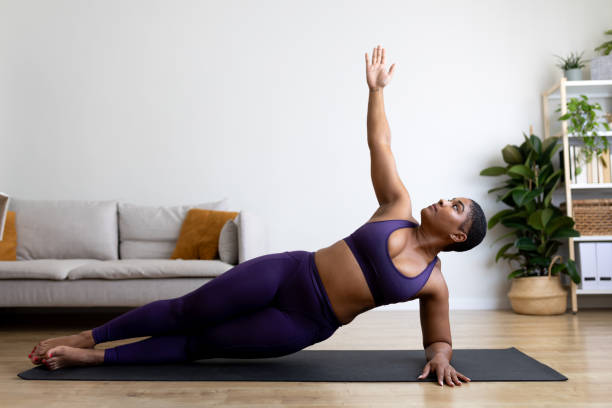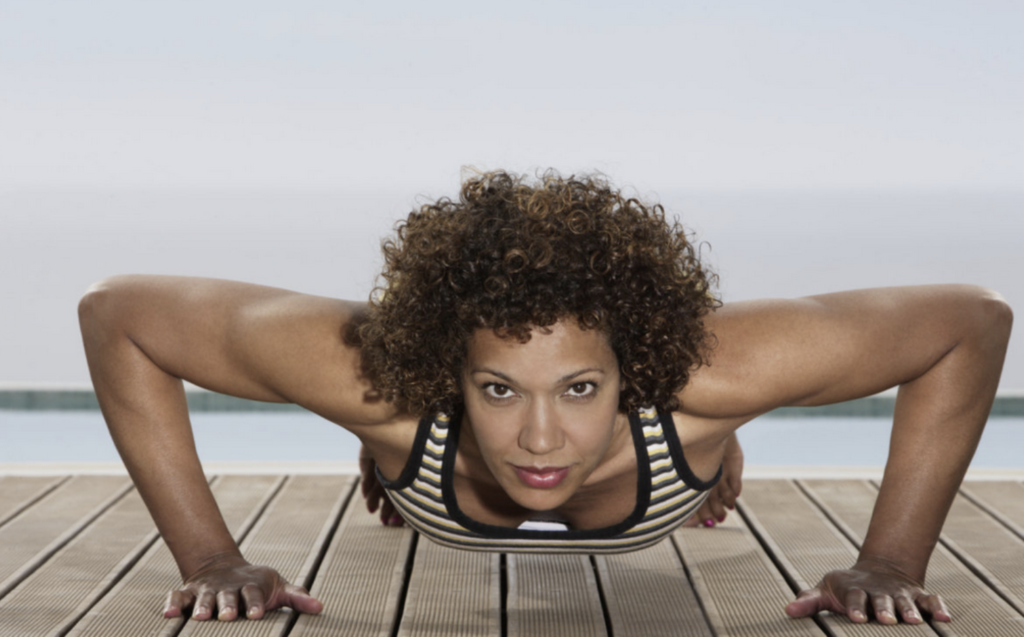What’s the best way to tone every angle of your stomach, including your obliques? Looking for the best exercises to lose belly fat? Look no further! One of the best exercises you can do is called… a plank.
What is a plank?
Quite simply, it’s an isometric exercise for the abs, meaning you hold a single position for a while rather than performing repeated movements. This static hold engages multiple muscle groups at once, making it one of the most efficient exercises to strengthen and sculpt your core.
You may be learning the plank exercise for the first time, or you may already incorporate it into your workouts. Either way, planking is an essential movement that most trainers consider one of the most effective exercises for your abs.
Not only does it strengthen and firm your abdominal muscles, but it also engages all the core muscles—including your back, hips, and shoulders—helping improve overall stability and posture. Unlike crunches, which primarily work the rectus abdominis (the front-facing six-pack muscles), planks target the entire core, including deep stabilizing muscles that help support your spine.
Benefits of Planking
- Strengthens Your Core – Planks work your entire core, including the rectus abdominis, transverse abdominis, and obliques.
- Improves Posture – Holding a proper plank position trains your body to maintain a neutral spine, reducing back pain and promoting better posture.
- Enhances Stability and Balance – A strong core helps improve balance and coordination, which is beneficial for sports and daily activities.
- Engages Multiple Muscle Groups – Besides your core, planks activate your shoulders, arms, and legs, making them a full-body exercise.
- Reduces Risk of Injury – By strengthening the muscles that support your spine, planking can help prevent lower back pain and injuries.

How to Perform a Standard Plank
Body Parts Targeted: Core, shoulders, back, and glutes
Equipment Needed: A mat (optional)
Reps: Hold for 30 seconds to 1 minute per set
- Place your hands on the floor with your wrists aligned under your shoulders (for a high plank) or rest your forearms on the ground (for a forearm plank).
- Extend your legs back, keeping your body in a straight line from your head to your heels.
- Engage your core by pulling your belly button toward your spine.
- Keep your neck neutral by looking slightly ahead instead of down.
- Hold this position for as long as you can, aiming for 30 seconds to 1 minute.

Side Plank Variation
If you want to target your obliques—the muscles along the sides of your waist—try the side plank:
- Lie on your side and position your right elbow directly beneath your shoulder.
- Stack your legs on top of each other or place one foot in front of the other for more stability.
- Lift your hips off the ground, forming a straight line from head to heels.
- Keep your left arm resting on your hip or extend it toward the ceiling for an extra challenge.
- Hold for 30 seconds, then switch sides.
Plank Modifications and Progressions
If you’re a beginner, you can modify the plank by lowering your knees to the floor while keeping your upper body engaged. This reduces the intensity but still strengthens your core.
- Plank with leg lifts – Lift one foot off the ground and hold for a few seconds before switching sides.
- Plank with shoulder taps – In a high plank, lift one hand and tap the opposite shoulder, alternating sides.
- Dynamic plank – Move between a forearm plank and a high plank for added difficulty.
RELATED: 4 Secrets to Burn Belly Fat While You Sleep
How Often Should You Plank?
For best results, incorporate planks into your workout routine at least three to four times per week. Start with 30-second holds and gradually increase your time as your core strength improves.
Final Thoughts
If you’re looking to lose belly fat and sculpt strong, defined abs, planking should be a staple in your fitness routine. It requires no equipment, engages multiple muscle groups, and can be done anywhere. Whether you’re a beginner or an advanced fitness enthusiast, the plank is a simple yet highly effective exercise to help you achieve your goals.
Give it a try, stay consistent, and watch your core strength and definition improve over time!





















